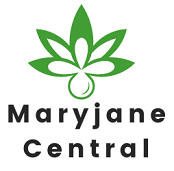New York hashish regulators nonetheless don’t have a common seed-to-sale monitoring device absolutely applied two years after launching adult-use gross sales, and that used to be a purpose for fear for a minimum of one board member all the way through this week’s common assembly.
New York’s approved dispensaries are projected to promote greater than $820 million in adult-use hashish in 2024, pushing their cumulative general north of $1 billion for the reason that state’s December 2022 marketplace release, consistent with gross sales figures introduced by way of Administrative center of Hashish Control (OCM) Coverage Director John Kagia on Dec. 10.
Whilst New York’s two-year gross sales determine lies within the shadows of alternative states that haven’t just lately introduced adult-use markets—together with Missouri, Maryland and New Jersey —Kagia touted the hot developments, together with more or less $26 million a week in hashish retail earnings in November.
“Since the marketplace introduced necessarily at the start of 2023, we’ve now generated $918 million [in retail revenue],” he mentioned all the way through Tuesday’s Hashish Regulate Board (CCB) assembly. “In accordance with the estimates for what we’re taking a look to do during the finish of the 12 months, we will be able to with ease destroy that billion-dollar mark. … That’s one billion greenbacks price of criminal retail hashish offered to adults in New York State. It’s one billion greenbacks of hashish this is now not being offered in the unregulated marketplace.”
That’s more or less $100 million in tax earnings generated over two years for state coffers, Kagia mentioned.
After having fewer than 30 dispensaries open all the way through 2023, New York now has 261 retail amenities serving adult-use shoppers as of Dec. 6.
Amid the hot uptick in gross sales figures and dispensary openings, CCB Board Member Dr. Jennifer Gilbert Jenkins, Ph.D., requested Kagia if the OCM is monitoring metrics for the good fortune of the state’s approved cultivators and processors.
“Are we taking a look at how a lot is being grown, what they’re yielding, what the marketplace price is, what they’re making?” Gilbert Jenkins requested. “As a result of I’m listening to from a large number of processors and growers that they’re nonetheless suffering, and I’m looking to put the ones two items of the puzzle in combination so to see, if we’re promoting such a lot in our shops, how are our processors and our growers nonetheless suffering?”
Via a “Seeding Alternative Initiative,” New York’s regulators equipped the state’s hemp farmers the unique alternative all the way through the 2022 outside season to be the first to develop hashish for the state’s adult-use marketplace. That chance backfired, on the other hand, when the ones farmers had nowhere to promote their plants all the way through New York’s gradual retail rollout in 2023, as tales of farmers sitting on rotting biomass and fiscal hardships inundated entrance pages final 12 months.
RELATED: ‘The Misplaced Yr’: New York’s Grownup-Use Hashish Business Grapples With Gradual Rollout
Kagia confident Gilbert Jenkins that the OCM is monitoring metrics for cultivators and processors, in spite of now not presenting the ones metrics at this week’s CCB assembly.
“This is one explanation why we’re so bullish, or so excited, about having the seed-to-sale device in position, which can permit us to try this in a extra systemized and virtually real-time means,” he mentioned. “Because it these days stands … as a result of we don’t have the seed-to-sale device in position, we’ve a number of other reporting streams all getting into us that let us know a special a part of the tale.”
Seed-to-sale monitoring now not most effective supplies state regulators with rigorous stock regulate methods to assist ensure that there’s no unregulated inversion or diversion of goods within the federal unlawful panorama, nevertheless it additionally gives a secure provide chain for shoppers. For instance, if there’s a product batch that exams certain for a banned pesticide or unsafe mildew ranges, then that whole batch can extra sufficiently be recalled from the retail marketplace.
As New York regulators paintings towards absolutely rolling out a seed-to-sale monitoring device subsequent 12 months, all licensees are required to notify the OCM by way of Jan. 17 that their present stock monitoring device distributors will combine with the state’s BioTrack THC monitoring device, together with an utility programming interface (API) that may transmit information electronically to the administrative center.
As section of this rollout, the state is protecting the primary 12 months of BioTrack’s tag prices for hashish cultivators and processors, OCM Performing Govt Director Felicia Reid mentioned all the way through Tuesday’s assembly.
“I’ve heard such a lot from trade stakeholders and neighborhood individuals in regards to the significance of seed-to-sale—this is, monitoring, tracking and understanding what’s in our hashish ecosystem,” she mentioned. “We additionally introduced BioTrack API for licensee integration to lend a hand with compliance.”
In responding to Gilbert Jenkins, Kagia mentioned he believes it’s true that there are nonetheless a large number of New York manufacturers sitting on merchandise and biomass that they’re suffering to promote during the provide chain.
“As we get extra shops open, we consider that that sell-through is going to occur at an more and more quickened tempo,” he mentioned. “So, the remedy is at all times going to be to extend the velocity with which doorways are getting open. … However I believe your level is honest and correct, that at the same time as merchandise are shifting fairly strongly by way of our retail sell-through, that tempo has now not but been sufficient to offset the capability that our manufacturers constructed for, given the velocity that retail shops are opening.”
Gilbert Jenkins lower him off.
“I want to disagree with that,” she mentioned. “My subsequent query is, how are we validating that the goods in shops are in fact coming from New York State? For the reason that fee of inversion on this marketplace is the grimy secret that everyone is speaking about—that we’re now not mentioning in those slides right here—that the quantity of product that’s getting into our criminal, licensed dispensaries from out of state is displacing New York product.
“And so, I would really like for us to be ready to check out and monitor that a bit bit higher and center of attention some enforcement on supporting our New York growers and our New York processors in order that we’re now not telling the tale that there aren’t sufficient shops open, or conversely that we have too many farms, as a result of I don’t assume that that’s a good image. We’d like to in fact have a look at, are we really promoting New York merchandise?”
As New York regulators struggled to open approved dispensaries below a social-equity way marred by way of underfunded tasks and court cases final 12 months, media experiences fixed that California hashish used to be “appearing up” on and “flooding” unlicensed dispensary cabinets in New York in spite of interstate hashish trade last federally prohibited.
However the ones experiences have been referring to unlicensed vape retail outlets, smoke retail outlets and comfort shops filling a requirement hole in New York amid the OCM’s investment and criminal hurdles.
It wasn’t till extra just lately {that a} board member introduced considerations that OCM officers overseeing the regulated market may just now not definitively attest to the stock, and thus the security, of goods in approved dispensaries two years after adult-use gross sales commenced.
“I assume that’s one thing that we want to accumulate information on,” Gilbert Jenkins mentioned.
“We take any fees, allegations or claims of inversion, or diversion for that topic, extraordinarily severely,” Kagia mentioned. “And we’ll type of pursue the ones very deliberately. It’s one thing that we will be able to now not tolerate. However this marketplace used to be meant to be for New York-grown, New York-bred product, and we stay immovable, roughly dedicated to that time.”















